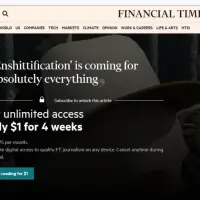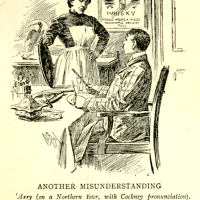With my seven-year-old I am reading The Voyage of the Dawn Treader, C.S. Lewis’ third Narnian chronicle. Every time I read it, this  scene jumps out at me both in its imaginative dept–“I am not so old now as I was then,” says the old man–and because it captures in such a succinct form Lewis’ entire worldview.
scene jumps out at me both in its imaginative dept–“I am not so old now as I was then,” says the old man–and because it captures in such a succinct form Lewis’ entire worldview.
In this scene, Narnian royals Lucy and Edmund, with their regenerated cousin, Eustace, encounter Ramandu, a sky-star that has retired to this Narnian island near the edge of the world. They ask him what lies beyond the island, and Ramandu shares a bit about who he really is.
“I saw [the last lands at the end of the world] long ago,” said the Old Man, “but it was from a great height. I cannot tell you such things as sailors need to know.”
“Do you mean you were flying in the air?” Eustace blurted out.
“I was a long way above the air, my son,” replied the Old Man. “I am Ramandu. But I see that you stare at one another and have not heard this name. And no wonder, for the days when I was a star had ceased long before any of you knew this world, and all the constellations have changed.”
“Golly,” said Edmund under his breath. “He’s a retired star.”
“Aren’t you a star any longer?” asked Lucy.
“I am a star at rest, my daughter,” answered Ramandu. “When I set for the last time, decrepit and old beyond all that you can reckon, I was carried to this island. I am not so old now as I was then. Every morning a bird brings me a fire-berry from the valleys in the Sun, and each fire-berry takes away a little of my age. And when I have become as young as the child that was born yesterday, then I shall take my rising again (for we are at earth’s eastern rim) and once more tread the great dance.”
“In our world,” said Eustace, “a star is a huge ball of flaming gas.”
“Even in your world, my son, that is not what a star is but only what it is made of. And in this world you have already met a star: for I think you have been with Coriakin [the master on the island of the Dufflepuds].” (page 117, HarperCollins eBook)
The one film that I think captures this so well is Mr. Magorium’s Wonder Emporium. In this clever film, the Counting Mutant (Accountant played by Jason Batemen) confronts Natalie Portman about some strange things at the toy store. She tries to explain that it is a magic store, but he simply doesn’t understand. To him, it is just a store–never suspecting that what a thing is made of is not what it is.






















Pingback: We’ll Have a Gay Old Time, or Why New Bible Translations Are Needed | A Pilgrim in Narnia
Pingback: Narnian Pilgrims and The Evil of Middle Management | A Pilgrim in Narnia
Pingback: Pilgrims and Slaves in the Valley of Contemporary Culture | A Pilgrim in Narnia
Pingback: A Prophecy After it Happened; Or, How Children Shape the Future | A Pilgrim in Narnia
Pingback: Giving Voice to the Story: On Reading the Hobbit Aloud to my Son | A Pilgrim in Narnia
Pingback: A Year of Reading | A Pilgrim in Narnia
Pingback: A Read-Aloud Post for World Read Aloud Day: Reading the Hobbit | A Pilgrim in Narnia
Pingback: Telling it Slant: The Problem With Writing Conversions | A Pilgrim in Narnia
Pingback: Great First Lines | A Pilgrim in Narnia
Pingback: “Into the Region of Awe” by David C. Downing: A Review | A Pilgrim in Narnia
Pingback: The Real Order to Read Narnia: A Third Way | A Pilgrim in Narnia
Pingback: On a Picture by Chirico: A Controversial Suggestion about the Creation of Narnia | A Pilgrim in Narnia
Pingback: 2015: A Year in Books | A Pilgrim in Narnia
Pingback: Between Mars and Malacandra, Fantasy and Real Life (A Friday Feature Visit to the Vault) | A Pilgrim in Narnia
Pingback: The Words C.S. Lewis Made Up: Jollification, Uglification, and the Miserific Vision | A Pilgrim in Narnia
Pingback: 2017: A Year of Reading | A Pilgrim in Narnia
Pingback: ‘The Name is Against Them’: C.S. Lewis and the Problem of Arthur by Gabriel Schenk | A Pilgrim in Narnia
Pingback: Good Political Leadership According to Narnia | A Pilgrim in Narnia
Pingback: Girls, Boys, and the Maps in Their Heads | A Pilgrim in Narnia
Pingback: And The Greatest of These…: A Review of C.S. Lewis’ Four Loves | A Pilgrim in Narnia
Pingback: Literary Diversity and the Bottomless C.S. Lewis: A Unique Journey in Books | A Pilgrim in Narnia
Pingback: I Passed my Viva! | A Pilgrim in Narnia
Pingback: “The Planets” in C.S. Lewis’ Writing, with a Planet Narnia Chart (Throwback Thursday) | A Pilgrim in Narnia
Pingback: 2020: A Year of Reading: The Nerd Bit, with Charts | A Pilgrim in Narnia
Pingback: Marsha Daigle-Williamson’s Reflecting the Eternal and Dante in the Work of C.S. Lewis, with Thoughts about Intertextuality (Good C.S. Lewis Studies Books That Did Not Win the Mythopoeic Award Series Insert) | A Pilgrim in Narnia
Pingback: “There Are No Cruel Narnians: What The Horse and His Boy Can Tell Us About Racism, Cultural Superiority, Beauty Standards, and Inclusiveness” by Daniel Whyte IV | A Pilgrim in Narnia
Pingback: “Can C.S. Lewis and L.M. Montgomery be Kindred Spirits?” My Talk for the 2021 C.S. Lewis & Kindred Spirits Society Conference (Nov 18-20) and How You Can Go to Romania With Me | A Pilgrim in Narnia
Pingback: The Sloo/Slow/Sluff of Despond: Today’s Word of the Day and a Spiritual Truth in John Bunyan’s Pilgrim’s Progress | A Pilgrim in Narnia
Pingback: The Sun came up | Dowsing for Divinity
Pingback: A Review of Mystical Perelandra: My Lifelong Reading of C.S. Lewis and His Favorite Book by James Como | A Pilgrim in Narnia
Pingback: Dour and Daft Canada Day Reflections of a Prince Edward Islander Speaking in a Nuclear Age, or Words I Don’t Use on Youtube or in Speeches | A Pilgrim in Narnia
Pingback: A Rationale for Teaching C.S. Lewis’ Fiction in The Wrong Order | A Pilgrim in Narnia
Pingback: Sharp Novel Minds and Pithy First Lines, with Jane Austen, C.S. Lewis, J.R.R. Tolkien, Dorothy Sayers, Geo. MacDonald, G.K. Chesterton, Ray Bradbury, N.K. Jemisin, Nalo Hopkinson, Margaret Atwood and more! | A Pilgrim in Narnia